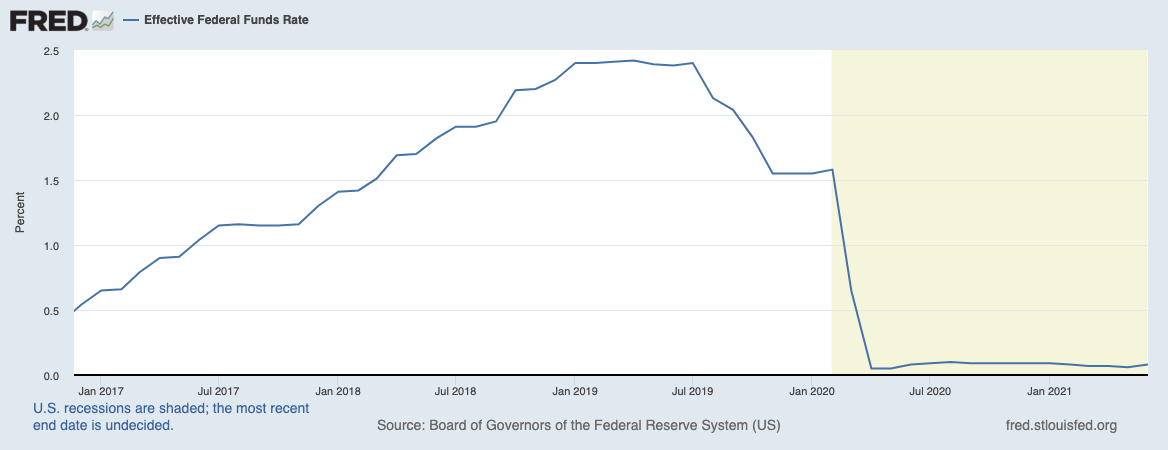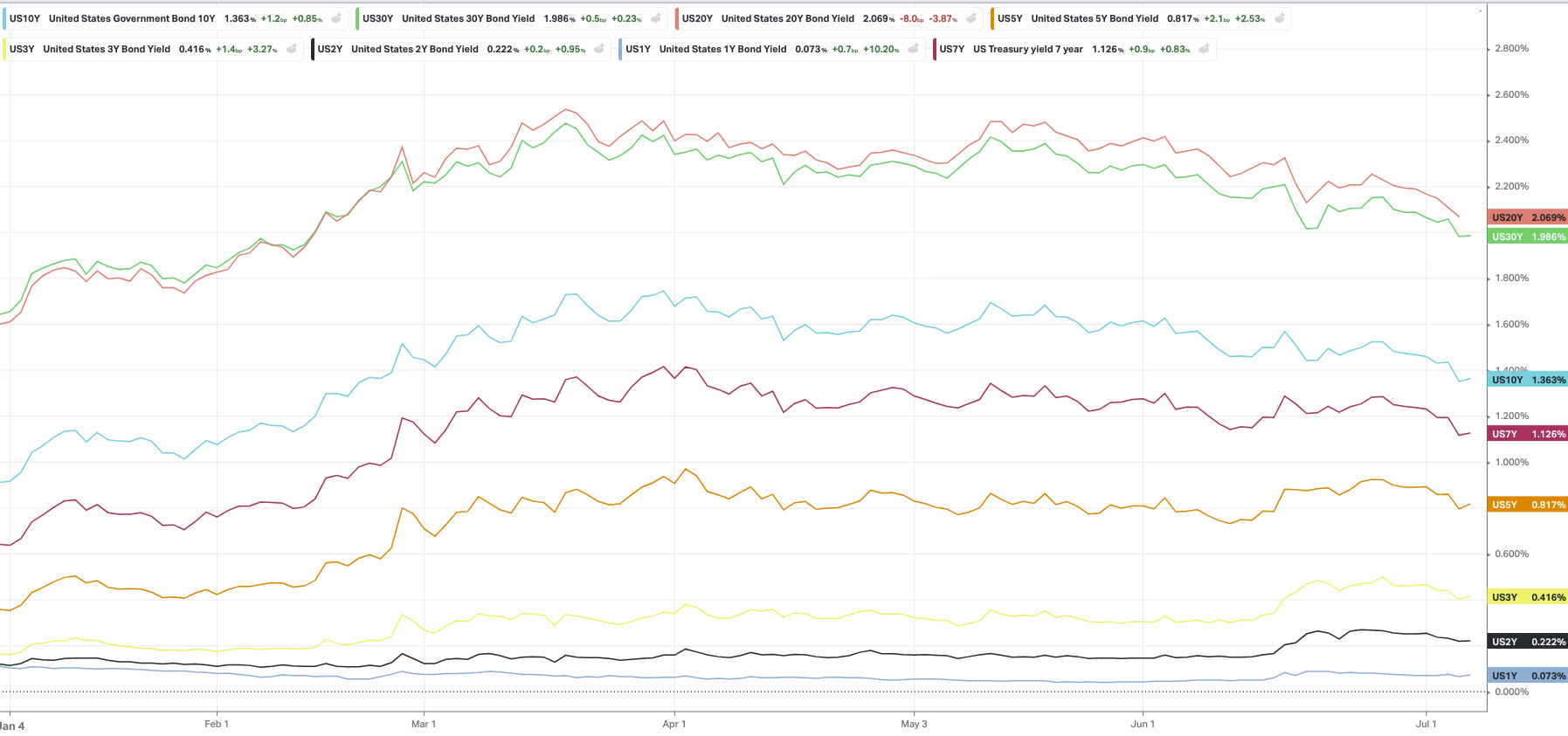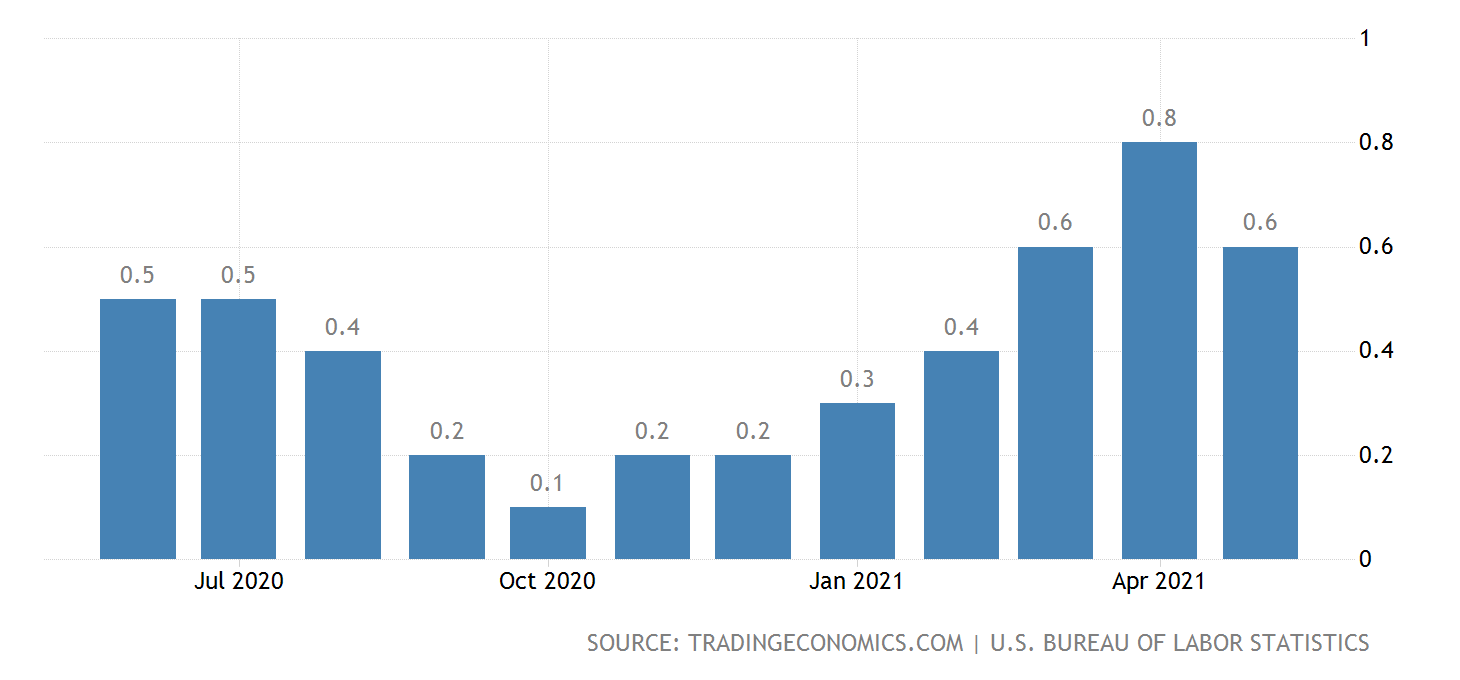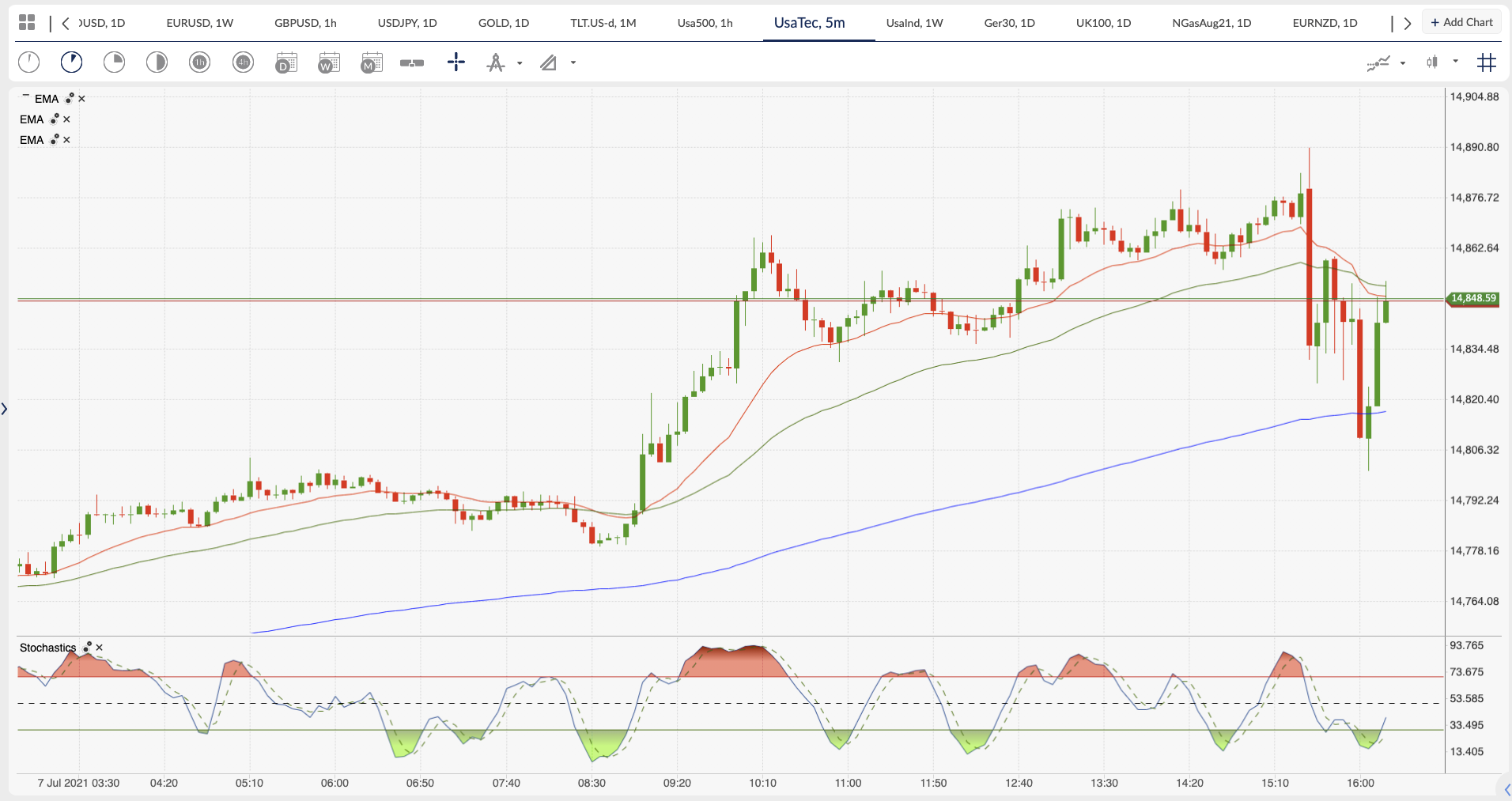Weekly Indices Analysis
Over the last 3 months the Dow Jones Industrial Average, Nasdaq 100 and S&P500 are up 3.37%, 9.01% and 6.51% respectively. Over the last year the 3 indices are up 33.53%, 41.04% and 38.30% and look to fresh highs each passing week. Towards the end of June, the DJIA looked like it was trying to break lower but has for the last 3 weeks made a new high without testing the previous weeks lows.
On my charts I always try and keep a set of trend and momentum indicators for visual support and resistance. The 3 exponential moving averages are always the 20, 50 and 200 period as these are widely monitored across all levels of trading. The stochastic offers a cheat sheet on when a pullback is more likely to be over, or when the rip is losing some momentum, but the market structure and size of candles can also as easily hint at where the support and resistance may lay.
Multi time frame analysis is also a key element to my trading, and I find using the same indicators but across different time frames helps me quickly gauge the strength and direction of the current market. For example, if I were looking to take an intraday trade, I would want to enter on a small-time frame like the 5-minute chart, but I would only wish to trade with the momentum and direction of the hourly time frame. And for added reason to place some size, I would want these shorter time frames to be in line with the momentum and direction of the daily chart.
Using the current Nasdaq Daily, Hourly and 5-minute charts, we can see that prices have made a new all-time high today at the US session open and cleared the previous day’s highs during the London session. The 20 (red), 50 (green) and 200 (blue) period ema’s are stacked on top of one another, they are diverging and are all pointing higher, which to me indicates that the market is in a prolonged move to the upside.
See real-time quotes provided by our partner.
The stochastic (10,3,3) indicator is overbought and has been for the entire move higher from when the candles closed above the moving averages back in May 2021. If the daily stochastic indicator were to now travel lower and close below the 70 level, that would be a clear indication that the market structure had shifted out of the grinding higher mode.
See real-time quotes provided by our partner.
A rising trend where the daily candles make new highs and new higher lows is a great starting point to looking for a long bias on the hourly charts. Just after the US session opened the Nasdaq pulled back lower and touched the rising 20 period moving average on the h1 chart. This ema, acted as dynamic support as did the confluent 14,800 level, which had been significant resistance from the close last night. Traders will be targeting big round numbers and the next one is the 15,000, so only 200 points to go. Buying the dip gives these traders something to repeat each time they get a mini sell off like we saw within the first hour of the US session today.
See real-time quotes provided by our partner.
On the lowest time frame and the one that I use as a trigger, the price action seen on the hourly chart correlated in the m5 price action finding support at the 200 period ema. For anyone trading the London session the dips down to the 50-period moving average, had proved a great strategy when the stochastic (10,3,3) had confirmed an oversold reading. But now we have extra volatility brought on by the added volume as the US traders entered the markets. The extra volume and volatility expand the ranges, so targets to the upside and lower increase and the envelopes of what was a standard deviation increase to 2 deviations or more.
See real-time quotes provided by our partner.
The same m5 chart a few moments later shows how the market used the 14,800/200 period ema as support. The oversold stochastic highlighted the move to the downside could be coming to an end. And the result is a 50 point move back to the upside and into the London session balance period before the US session expanded the range to the upside.
Could this go higher today? We would need to get above the balance area for me to take a further long or add to the position from the 14,800 bounces. However, the probabilities of this going higher is still in our favour.
Rising interest rates are not kind to tech stocks. Rising rate volatility is not kind for tech stocks. And rising inflation is not kind to tech stocks. Currently rates set by the US Federal Reserve are low and the latest reading is 0.08.


The current yields in the US treasuries are also low or rolling over from their peak in March 2021.


Tech shares like Uber, Tesla, NVIDIA, Amazon, Netflix, Facebook are particularly sensitive to changes in interest rates. If you are new Tech IPO company with no real earnings data either current or going into the next few years, your company is going to be even more sensitive to rising yields and interest rates. Valuations for technology stocks are heavily predicated on long-term interest rates remaining low and when we had the rising inflation fears and market anticipation for the Fed to raise early, the Nasdaq took a near 2000-point hit. It lasted for a couple of months between February and March and now on a monthly chart the current price action looks like expanding that range by at least 2X.
See real-time quotes provided by our partner.
The S&P Volatility Index is showing that volatility has dropped back to pre-pandemic fear levels. Today’s VIX is slightly higher from the US open, and this translated into the pullback we saw on the lower time frames for the Nasdaq. If you use the trend following buy the strategy, waiting for the VIX to continue making lower highs and lower lows on the same time frame as your analysis is a great timing indicator.
Inflation is also a key barometer of whether the indices are likely to carry on rising or not. I prefer to look at the rate of change as a steepening of inflation is not good, but a gentle rise is. Inflation can be a sign that an economy is growing, and that prosperity is increasing. Wages are a good metric to whether or not things are going well, especially when combined with good jobs data. Unfortunately, we are getting mixed results with these key macro fundamentals, so caution is needed. Which translates to don’t marry your position.
Today’s JOLTS job openings data showed that openings in the US hit a new record high. From the US Bureau of Labour Statistics:
On the last business day of May, the job openings level changed little at 9.2 million. The job openings rate was unchanged at 6.0 percent. Job openings increased in other services (+109,000), state and local government education (+46,000), and educational services (+35,000). The number of job openings decreased in arts, entertainment, and recreation (-80,000); state and local government, excluding education (-56,000); and federal government (-17,000).
However, rising financial stress, as stimulus fades and inflation fears percolates, is weighing on US economic optimism. From the Investor’s Business Daily: The IBD/TIPP Economic Optimism Index, an early monthly read on consumer confidence, slipped 2.1 points to 54.3 in July, the lowest since February. Readings above the neutral 50 level reflect optimism.


Tonight, we get to read what the FOMC meeting talked about and how well they feel the economy is doing. And whether the talk is moving in a more Hawkish manner or whether they are really concerned about something. They have been talking a lot about transitory inflation and if June’s change month on month comes in lower, the markets may concede that Chair Powell was right and the FOMC were correct to not raise rates this year so far.
The larger S&P500 can push the Nasdaq around as the S&P500 is now around 40% tech based. If the two are not following lock step, I tend to watch the S&P500 for long term direction and see if the Nasdaq pulls back more for a better entry. Keeping an eye on the largest tech companies by weighting can also give a quick heads up of which way the indices are likely to travel. Apple, Microsoft, Google, Facebook and Amazon are on my watch list, and everything becomes a lot easy to trade when they are all Green or Red.
While we are trying to work out the nuances of the macro fundamentals, I find it easier to keep following the daily time frame trend. Technical analysis at least keeps you in line with the higher time frame moves and out of the noise of the market intraday gyrations. Keeping the risk small and profit targets large means you only have to be right 45% of the time, so you can afford to take some trades even if they fail.









